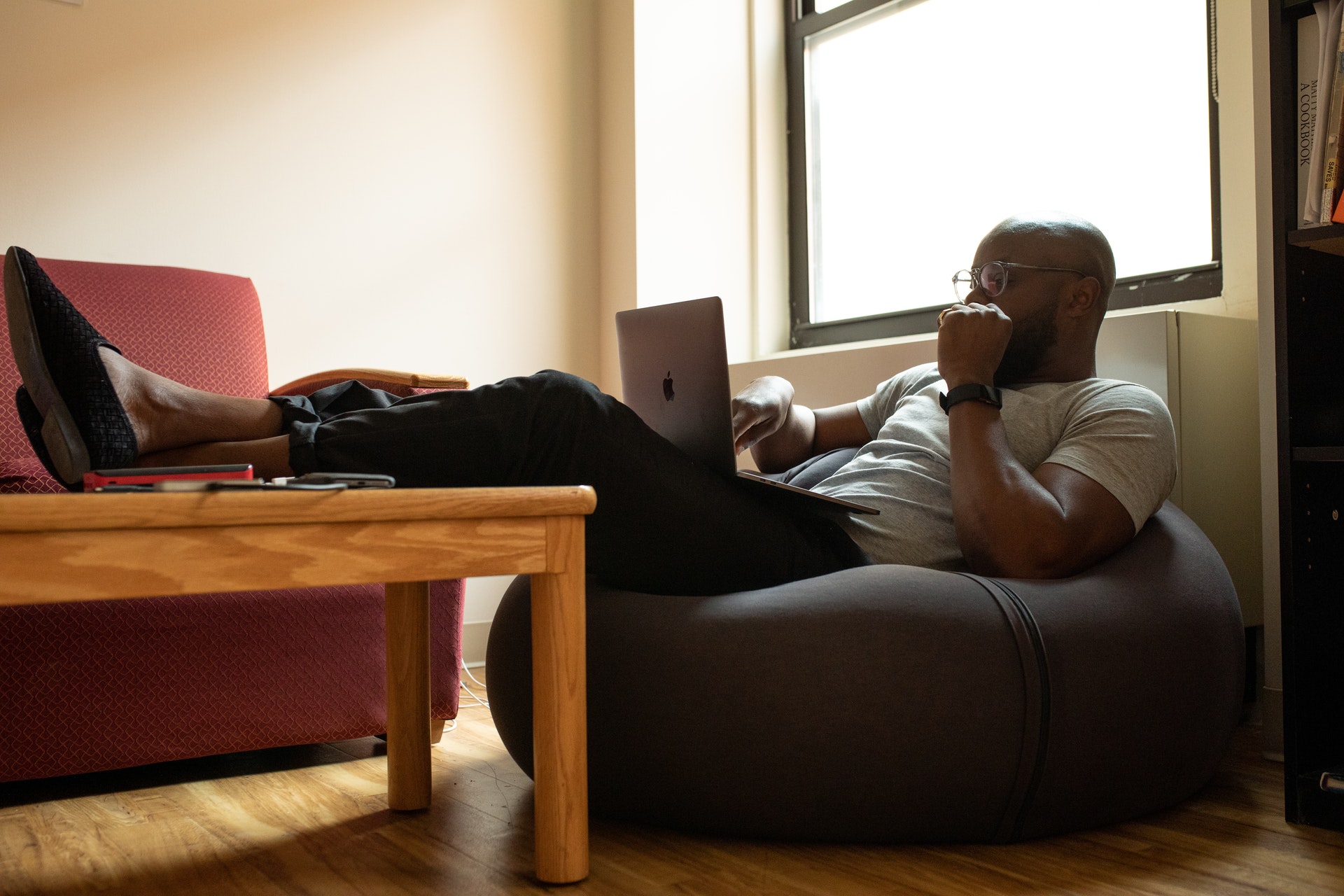
Tips for Staying Productive (and Sane) While Working from Home
In our last blog, we gave some tech-savvy tips for staying connected with clients while working remotely. While you need some decent technology to efficiently work from home (WFH), the most important piece of equipment you need to succeed is you. All the technology in the world won’t help you adjust to working from home if you don’t know how to handle it mentally.
As an advisor, you’re probably the type of person who enjoys meeting new people and talking to clients, so sitting at home alone with a laptop can be a struggle. If you want to succeed (and maintain your sanity) while you work from home, you have to set the right schedule, priorities, and mindset for your workday. WFH is a fine art that about half of our team practices daily, so we’ve asked them to share some of their best tips for working from home.
Create the Environment
Whether you have a home office or you’re operating from a corner of your dining room, you’ll want a designated space that you call your “office.” This helps you transition to a professional and productive mindset each time you sit down to work, and it also helps you separate your job from the rest of your home. (This is especially important, since one of the common woes of WFH is that it can feel like you’re always at work.)
If you need more help getting in and out of “work mode,” try taking it to the next level—when Julia was working from home in March, she lit a certain candle only during her work hours to set the tone for her workday. Adding sensory cues—like specific music or smells—can train your brain to focus on a task or process when you’re exposed to that trigger.
That said, sometimes it helps to mix it up. Sadye likes to move her workstation to a new room when she needs a change of pace or to think more creatively. And since research has shown that a new environment can offer new perspective, she’s probably on to something!
And of course, when it comes to distractions you can control—like the TV or your phone—take control. Keep your devices off or move to another room if you need to. Do your best to re-create your work environment—if you wouldn’t watch TV at the office, why try it when you’re working from home?
Set Concrete Start and Stop Times
One thing that nearly all of our WFH-ers suggested was to set a specific time to start and stop working. Otherwise, you can find yourself in a weird limbo-mode of answering emails while watching Sports Center and never feeling truly engaged at work or at home. When you start your day, head to your designated workspace and stay there until you plan to take an actual break. Our team also suggests that when you’re done for the day, make sure you have a way to “put work away,” whether by shutting the door to your office or storing your laptop out of sight.
Jenn also suggests that until you’re really comfortable with WFH, you shouldn’t allow yourself to do things you wouldn’t normally do at work. For example, you wouldn’t be able to wash the dishes, start laundry, or play with your dog (unless you bring your furry friend to work)—so you should avoid those distractions during your “work hours.” Then, once you’ve developed a solid routine where you feel productive, you can start leveraging the “household benefits” of working from home—taking a ten-minute break to catch up on laundry, walk the dog, or whatever you want. After all, one of the reasons you became an advisor was probably for the flexibility the job provides—why deprive yourself of that at home? But if you’re new to WFH and you’re struggling finding a balance, this rule can help you establish boundaries and prevent you from wasting time, costing your business, and missing out on focused work and personal fulfillment.
Managing Tiny Coworkers
Ignoring distractions can be tough at home, but hopefully using the above start-and-stop rule will help. That said, if you have kids who are schooling from home (or too young for school), you may have a few unavoidable distractions in your workspace. When COVID started, our entire office worked from home for a couple months, including those who have young kids and prefer to work in the office. To give herself some quiet time, Rachel developed the habit of getting up early to work while her kids slept in, which helped her knock out several hours of focused work before they woke up.
If you have a virtual meeting with a client, it’s also a good idea to warn them about any possible distractions beforehand. Tell them, “I just wanted to let you know, I’m working from home and I have my kids (or dogs) with me, so I apologize in advance for any extra noise during our call.” It’s easier (and less awkward) to address an interruption before it happens than to explain it in the middle of an important discussion.
Of course, you also want to do your best to minimize disruptions during important meetings. If you can, consider hiring a sitter for a few hours or even plan meetings around nap time. If that’s not an option, most people will understand, especially now—after all, lots of your clients might be (or have been) in the same boat.
When my kids were toddlers, one of the most important lessons I learned was that by working from home, I was giving my kids insight into what it was like to work. And because of this, I had to be careful about the impression I gave them. A good friend taught me to avoid this phrase around my kids: “I have to work now.” By making the excuse that I “had” to work, and therefore couldn’t focus on my kids at that moment, I gave them the impression that work was a burden, rather than an opportunity and a blessing. It might sound inconsequential, but your words are powerful, and the attitude you have toward your work will reflect on your kids—especially if they’re with you “at work.”
After my friend pointed this out, I changed the way I talked to my kids—“I get to focus on work now, so I get to focus on you later.” Spending time with your family and working are both good things—make sure your kids understand that.
Another thing to remember is that your three-year-old doesn’t understand why you can be physically present and yet unable to give him attention. If you can, it helps to find someone who can give extra attention to your kiddos while you work, even if just for a few days or hours during the week.
Put on Some Pants
The great thing about working from home is that you don’t have to spend time getting dressed (until you have a Zoom meeting). But the downside to working from home is that you don’t have to get dressed.
Yep, you heard me. Staying in your pjs all day can do some serious damage to your productivity (and your psyche). The way we dress affects the way we think about ourselves, and consequently, the way we act. Dressing well can boost your confidence and remind you that you’re an A-player—not some slob on the couch. So, if this is a habit you’ve forsaken while working from home… it’s time to put on some real pants.
You don’t have to be fancy—for Chandler, making the switch from pajamas to jeans and a company t-shirt, or even nice workout clothes—makes a mental difference. The key is to wear something you would leave the house in and makes you feel “on.” And of course, if you plan to see a client on camera, look the part in a logo polo or even a dress shirt for the day.
Respect Yourself and Your Health
Between corona quarantines and a WFH lifestyle, you might feel like you never leave the house. This is something all of our WFH team agreed on—it’s important for your mental health to get out every now and then, even if it’s just to walk around the block. If you’re working from home full time, you also have to be more intentional about scheduling time to be with people. Every now and then, make time to reach out to your coworkers or clients for lighthearted or personal conversations—not just when you need to talk shop.
Make the Most of It
At the end of the day, everyone is different. What works for you might not work for another advisor, and vice-versa. (I’ll be honest, I hate working from home—and you might feel the same way.) But since you might not have the option to head to the office right now, make the most of your time at home by trying some of our team’s suggestions.
And if you’re dying to get back to the office, don’t forget that there are benefits to working from home! You don’t have to pack a lunch or eat out; you can spend more quiet, focused time on projects; and, as Sadye pointed out, you can save yourself from 200 hours a year in your car—which is apparently how much the average commuter spends in their vehicle.
Whether you love or hate WFH, we hope our team’s tips have been helpful. If you’d like tips for staying digitally connected with clients while you WFH, read How to Maximize Your Communication Skills During a Pandemic.










